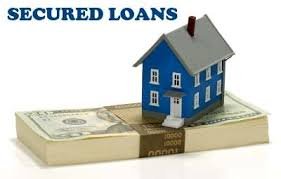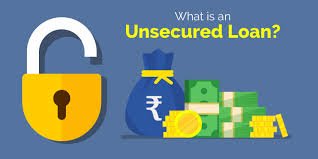what are secured and unsecured loans?

Secured Loans
Definition: Secured loans are loans that are backed by collateral. This means the borrower pledges an asset (like a car, house, or savings account) as security for the loan. If the borrower defaults on the loan, the lender can seize the collateral to recoup their losses.
Examples:
- Home Loans (Mortgages):
- Example: A person takes a loan to buy a house. The house itself is the collateral. If the borrower fails to repay the loan, the lender can foreclose on the house and sell it to recover the loan amount.
- Auto Loans:
- Example: A person takes a loan to buy a car. The car is the collateral. If the borrower defaults, the lender can repossess the car.
- Secured Personal Loans:
- Example: A borrower uses their savings account or certificates of deposit (CDs) as collateral to get a loan. If they default, the lender can take the savings or CDs.
Advantages:
- Lower interest rates due to reduced risk for the lender.
- Higher borrowing limits.
- Longer repayment terms.
Disadvantages:
- Risk of losing the collateral if the loan is not repaid.
- Example: A borrower uses their savings account or certificates of deposit (CDs) as collateral to get a loan. If they default, the lender can take the savings or CDs.

Unsecured Loans
Definition: Unsecured loans are loans that are not backed by any collateral. The lender relies on the borrower’s creditworthiness and promises to repay. Because there is no collateral, these loans typically have higher interest rates.
Examples:
- Personal Loans:
- Example: A borrower takes out a personal loan for medical expenses, travel, or debt consolidation without pledging any assets.
- Credit Cards:
- Example: A person uses a credit card to make purchases. The borrowed amount is unsecured and based on the individual’s credit history.
- Student Loans:
- Example: A student borrows money to pay for their education without collateral. Repayment is based on the borrower’s future income.
Advantages:
- There is no risk of losing assets.
- Simpler and quicker approval process.
Disadvantages:
- Higher interest rates due to increased risk for the lender.
- Lower borrowing limits.
- Shorter repayment terms.

Most Popular Loan Type in India
In India, the most popular type of loan is the home loan (secured loan).
Reasons:
- Cultural Importance of Homeownership:
- Owning a home is a significant milestone and a matter of pride in Indian culture. People prefer investing in property, leading to a high demand for home loans.
- Government Incentives:
- The Indian government offers various incentives, such as tax benefits on home loan interest payments and principal repayments, making home loans attractive.
- Longer Tenure and Lower Interest Rates:
- Home loans generally have longer repayment tenures and lower interest rates compared to unsecured loans, making them more manageable for borrowers.
- Growing Real Estate Market:
- The expanding real estate market and increasing urbanization have driven the demand for home loans.
In summary, secured loans like home loans are prevalent in India due to cultural preferences for homeownership, government incentives, and the economic benefits they offer to borrowers.
– Source collected By
Vishal Kumar K R











Trackbacks & Pingbacks
[…] Click here to read- FINANCE JOURNEY-4 Click here to read-FINANCE JOURNEY-3 […]
[…] Click here to read- FINANCE JOURNEY-3 Click here t read- FINANCE JOURNEY- 2 Click here t read- FINANCE JOURNEY-1 18/07/2024/0 Comments/by VishalTags: Education, Finance journey, finance minister, golbal […]
[…] here to know What is Finance? Click here to read FINANCE JOURNEY-3 Disclaimer 15/07/2024/0 Comments/by VishalTags: corporate, Finance journey, […]
Leave a Reply
Want to join the discussion?Feel free to contribute!